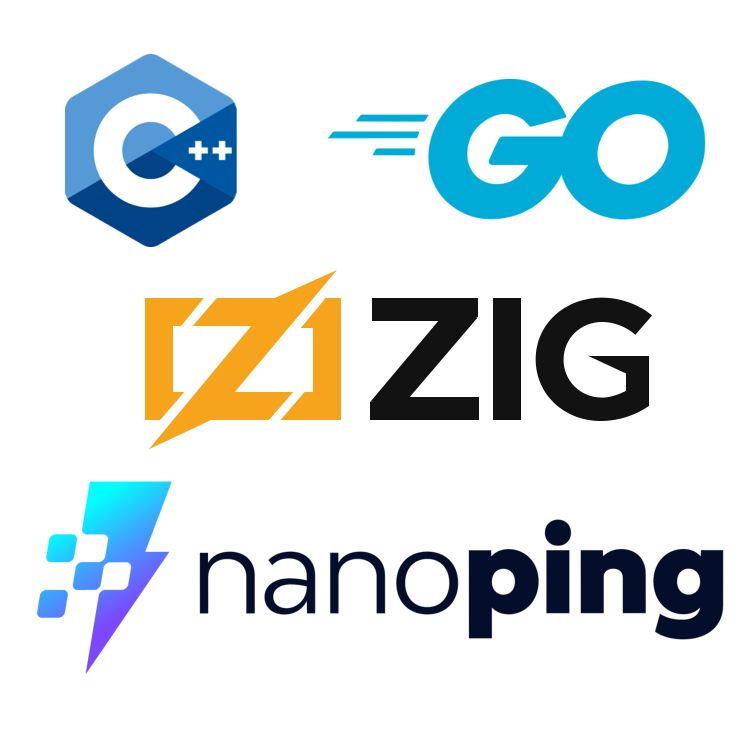
Research and Development
Building a Zero-Dependency Networking Tool with Go, C++, and Zig
28 Jun 2025
Distributing software is rarely as simple as writing code and sending a binary. The reality is often messy: you have to consider multiple CPU architectures, a variety of operating systems, conflicting system libraries, and an unpredictable set of dependencies. It’s a maintenance headache.
This complexity is one of the many reasons why developers love the Go programming language. Go makes it easy to build statically linked, self-contained executables — no runtime dependencies, no surprises. Just a single binary you can copy to a server and run.
At NanoPing, we wanted the same kind of simplicity for our networking tool: np.
Inside np: Go, C++, and the Zig toolchain
Our np tool follows a similar philosophy to Go, but with a more customized stack under the hood:
- The control plane is written in Go
- The data plane is written in C++
Now, building a combined executable from two different languages is already tricky — but what makes our setup special is the toolchain we use: Zig.
Zig is a modern programming language that also includes a powerful Clang-based toolchain capable of compiling C and C++ code. In fact, Zig can act as a drop-in replacement for GCC or Clang, but with one major advantage:
Zig makes it easy to produce fully statically linked executables that just work on virtually any Linux system.
Here’s an excellent write-up from Zig creator Andrew Kelley explaining how this works: 👉 Zig cc: a powerful drop-in replacement for gcc/clang
One File. Everything Included.
We took it a step further. With np, we bundle everything — from the CLI, dashboard, web UI, and even external dependencies — into a single, self-extracting executable.
That means no installers. No Docker images. No surprises.
Just:
$ sudo np up
…and you’re up and running.
Portability That Just Works
Our distribution strategy means that as long as you have:
- A Linux kernel ≥ 3.10
- Either an ARM or x86 CPU
You're good to go. It runs on everything from Raspberry Pis to cloud instances.
Why We Do This
When you're building low-latency networking services, the last thing you want is for your developers to struggle with dependencies or incompatible environments. They should be spending time testing performance — not debugging build systems.
That’s why we’ve focused on:
- Simple deployment
- Zero configuration
- Maximum portability
You bring the hardware. We bring the networking.
Want to try it?
Would you like to develop a custom solution?
We'd love to hear from you. Whether you have a question about features, pricing, or anything else — our team is ready to help.
Contact us